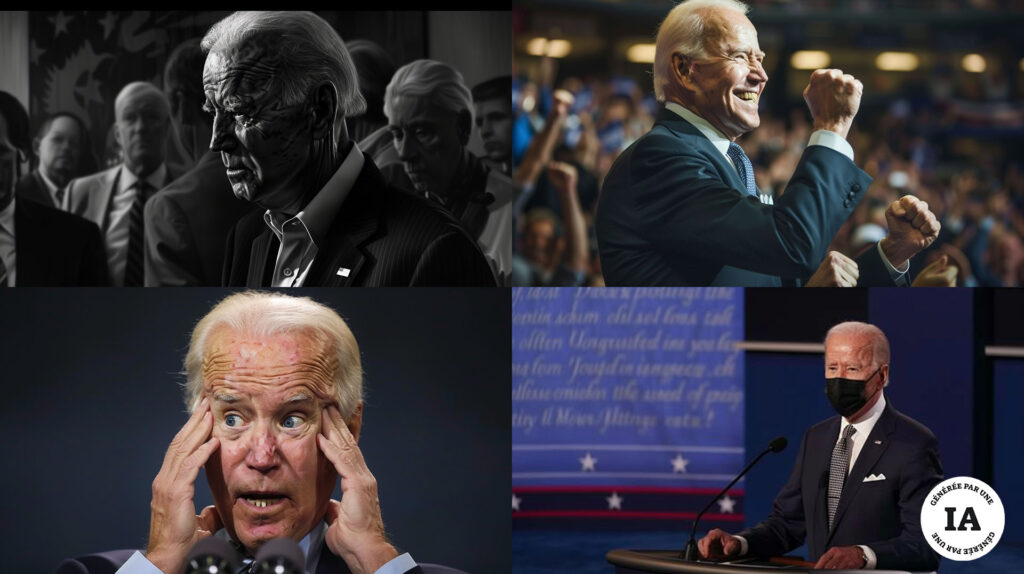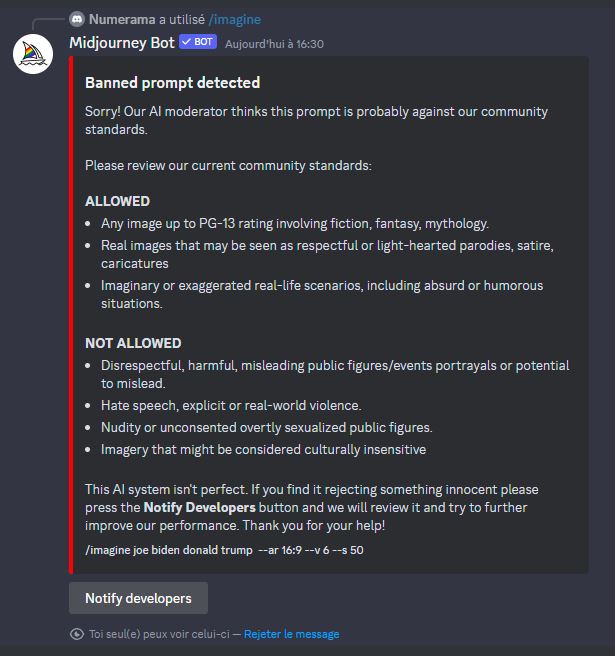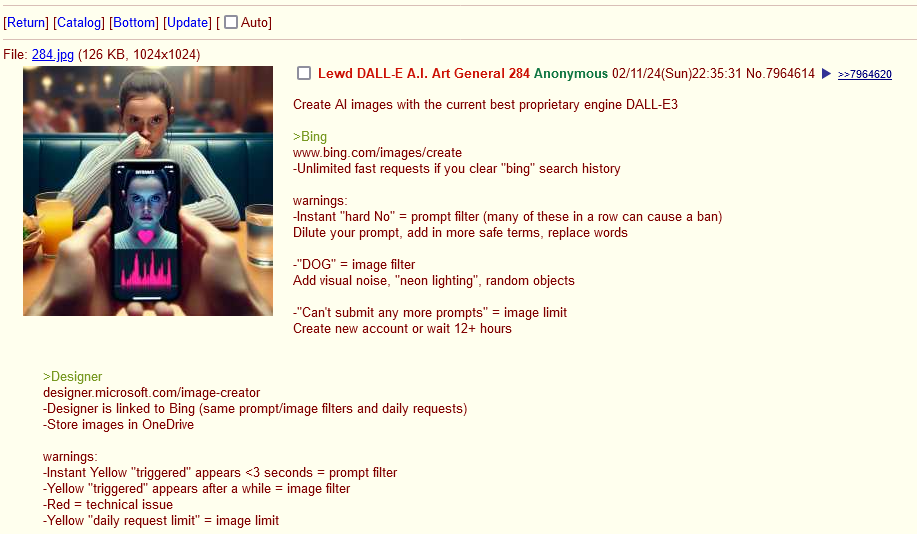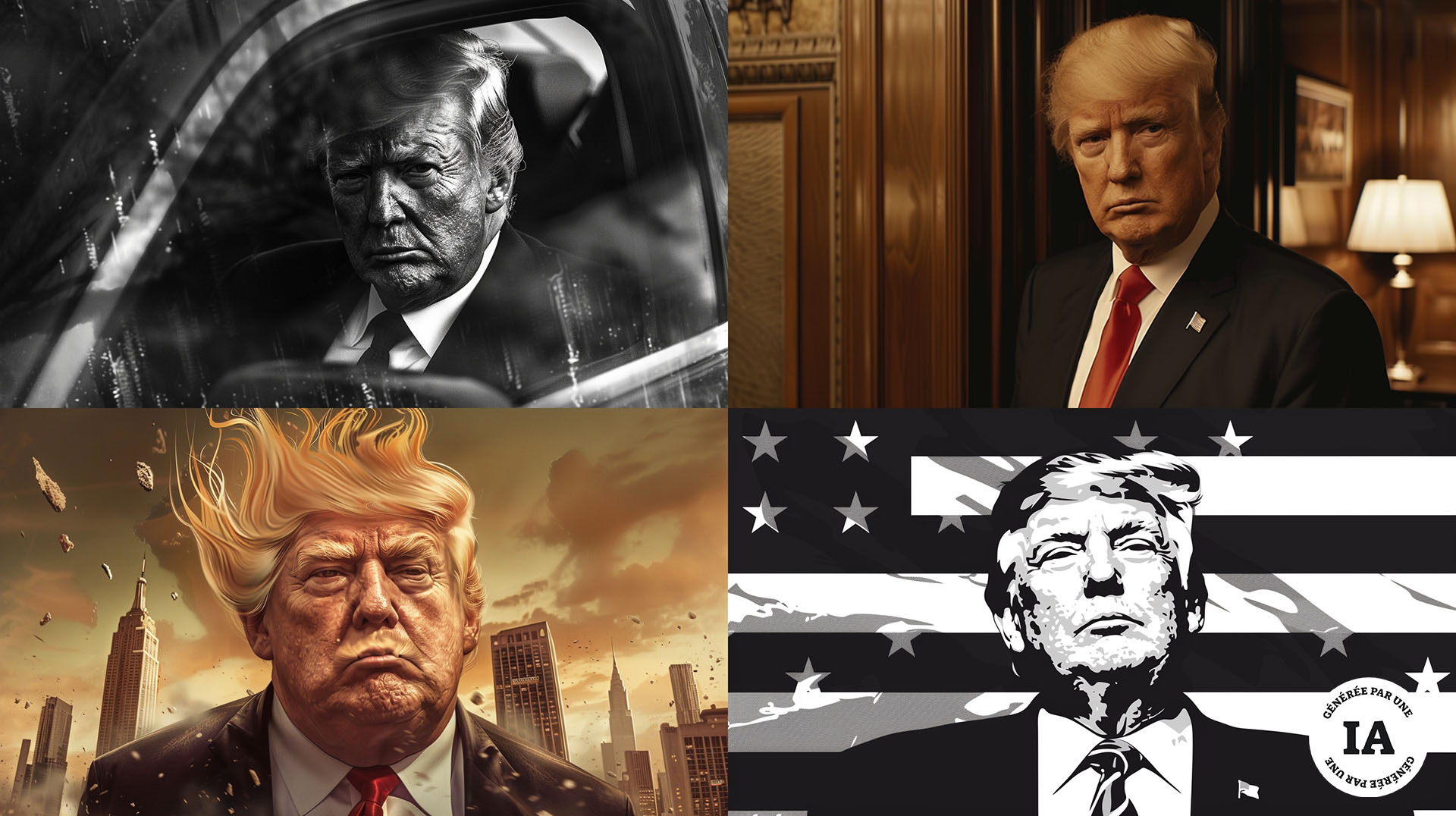Midjourney is seriously considering banning for a time the possibility of creating political images using artificial intelligence. In focus, the future clash between Donald Trump and Joe Biden during the 2024 American presidential election, and the risk of uncontrollable disinformation.
The 2024 American presidential election will take place on November 5 and everything suggests that the face-to-face between the Republicans and the Democrats will be a “re-match” between Donald Trump and Joe Biden. Even more than in 2020, the electorate should be white-hot in this election with colossal stakes.
Advertisement
In this context, the management of Midjourney is seriously considering banning any creation of a political nature for the months to come. This is what signals Bloomberg, in its February 8 edition, reporting the words of David Holz, the founder and boss of Midjourney. Essentially, it would ban queries about Joe Biden and Donald Trump.
The ban on generating visuals on these two political figures — and undoubtedly also on other leading officials — should last twelve months: a period which would cover the electoral campaign, but also the primaries, the election, the certification results, the inauguration and the start of the presidency.
“ I know it's fun to make pictures of Trump », admitted David Holz, affirming that he also creates them from time to time. “ Trump is aesthetically very interesting. However, it's probably best to step back a bit during this election. We will see. »
“ I know it's fun to make pictures of Trump »
David Holz
The diversions are already here
Midjourney's reflection comes at a time when misappropriations are already underway, with visuals explicitly designed to harm Joe Biden or Donald Trump. They are sometimes represented naked, in degrading postures or situations. We also see them in scenes designed to put them at a disadvantage.
Advertisement
We know that Midjourney can occasionally ban certain requests, to avoid sexual abuse for example. In 2023, it was noted that the artificial intelligence image generation tool did not respond to prompts on Xi Jinping, the Chinese president (this has since changed: we can now obtain visuals).

With the release of Midjourney v6, which is now capable of producing photorealistic renderings, the danger of manipulation is even greater. In principle, Midjourney has already put in place safeguards to avoid certain prompts, but the risk of circumventing moderation filters remains, if the prompt is skillfully written.
According to our findings, certain combinations are already no longer possible on Midjourney: it is not possible to produce an image in which Joe Biden and Donald Trump appear. However, we can always have one or the other in separate visuals. Again, not all requests pass. Even a simple “Joe Biden cartoon” is refused.
Currently, if a prompt is blocked by moderation, the following message appears:
Prompt banned detected
Sorry ! Our AI moderator believes this prompt is likely against our community standards. Please review our current community standards.
Allowed :
- Any images up to PG-13 rating involving fiction, fantasy, mythology.
- Actual images that may be considered respectful or light-hearted parodies, satires, or caricatures.
- Imaginary or exaggerated real-life scenarios, including absurd or humorous situations.
Unauthorized :
- Disrespectful, harmful, misleading or misleading depictions of public figures/events.
- Nudity or overtly sexualized public figures without consent.
- Hate speech, explicit or actual violence.
- Images that may be considered culturally insensitive.


Midjourney won't solve anything alone
The phenomenon of deepfakes and hijacking by generative AI is not new. From 2017, researchers from the University of Washington created a photorealistic portrait of former US President Barack Obama. Another video, in 2018, was designed to warn the public about these fakes.
The problem, however, is that generative AI is making such progress that it is becoming increasingly difficult to distinguish reality from imagination. Furthermore, these montages are everywhere: photos, videos and even voices can be diverted to make a third party say erroneous words, or put them in an embarrassing position.
Midjourney's decision, if it is adopted, will not be too much to avoid manipulation. However, it risks being insufficient without the support of the rest of the generative AI industry. On paper, the main alternatives to Midjourney, like Adobe Firefly or Dall-E, also have guidelines to follow.
In this area, things are moving. In February, we learned that Meta (the parent company of Facebook and Instagram) embarked on the identification content produced by AI, photos and videos, so as not to mislead its users. And OpenAI now adds markers to identify images generated by its Dall-E 3 tool.
However, there remain potential blind spots: generative AI tools which are freely accessible in nature, and which are based on the principle of open source. Upstream control of what can or cannot be done with it is less obvious, unlike more locked-down, more commercial solutions.


Commercial and locked tools are not immune to having holes in the racket. The pornographic diversions of Taylor Swift could be carried out with Dall-E and despite OpenAI's efforts to plug the gaps, it is still possible, according to our findings, to circumvent the rules in place with certain techniques.
And, on the other hand, the development of generative solutions by malicious third parties is also a plausible scenario, to disrupt the smooth running of the vote. It has been accepted that Russia, for example, interfered in the 2016 US election, through various means. The use of generative AI could be one of them in 2024.
